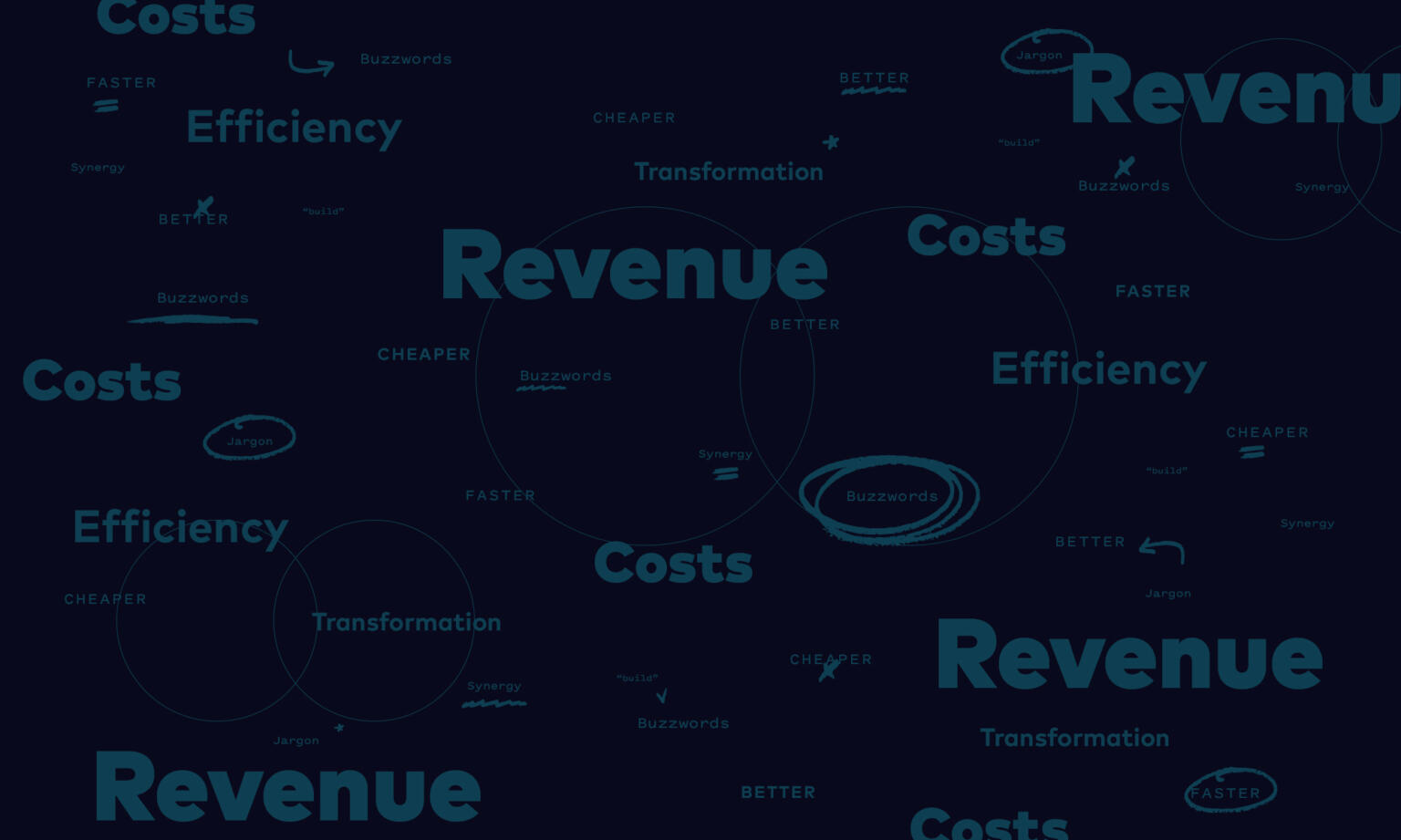Real Talk: Defining Digital Transformation

Buzzwords & Bad Information
The alarm has been sounded. It’s time. Way past, if you listen to many so-called experts. It’s time for you to undertake the buzziest of buzzwords and digitally transform your business. And as we’ve said many times: in the future, every business will be a tech business.
But… how, exactly? You know you want your organization to be the next Netflix, and not Blockbuster. You know you should look to the Amazon example and avoid the Borders Books path.
So, it's clearly not a matter of if you should digitally transform. It's a matter of how. But Before you can even think about The How of digitally transforming (and we’ll have boatloads of upcoming content on that topic) we need to first understand The What.
What does it mean to digitally transform your organization? Let’s get a clear definition first. A jargon-free, give-it-to-me-straight, even-your-grandma-could-understand-it definition. Because it’s not just all apps and cloud and hiring a bunch of coders. It starts much more simply.
The 3 Categories of Transformation
A successful digital transformation is one in which you have a clear stakeholder benefit, a defined type and specifics all locked down. Way before you even begin to think of any organizational changes or big investments.
But first – an important distinction alert! Too many business leaders hear “transformation” and immediately think “disruption”. Wrong, wrong, wrong. That’s bad intel. While disruption is certainly a kind of transformation, not all transformations are necessarily disruptive. Disruptions only work when a current system or industry is somehow cumbersome or inefficient to the customer.
In other words – if it ain’t broke, don’t disrupt it.
Now, back to the matter at hand. Most stakeholder benefits can be divided into three separate categories: reduced costs, increased efficiency and/or customer satisfaction, and increased revenue.*
The Operational Transformation
This means that you are transforming your company by finding ways to do what you are currently doing only better, faster or cheaper. Think of it as being less about turning your industry on its head (now that’s disruption) and more as finetuning your system that has already proven to be what your customers want. This is one of the simplest and easiest transformations to make and the benefit to your stakeholders is a reduction of costs.
The Operating Model Transformation
Now we’re venturing into more disruptive territory. Transforming your operating model means doing what you are currently doing in a fundamentally different way. Think Netflix. A DVD mailing service morphing into the pioneers of online streaming and then to a powerhouse creative company producing original, Emmy-winning content. This can be riskier, in that you’re offering your products and services in a brand-new way, and there’s no guarantee that your current customers will warm to this new way. But they might. And you could create a whole new customer base. With careful surveying, piloting and optimizing, the overhaul of your operating model can be one of the most effective kinds of digital transformation. Your stakeholders benefit? Increased efficiency and/or customer satisfaction.
The Strategic Transformation
This is the heaviest lift, with the most impactful upside. The benefit is an exciting one: increased revenue! And in order to greatly increase revenue, sometimes it’s necessary to change the very essence of a company. Let’s look at some famous examples of this holy grail of transformation.
Google began as a simple search engine, one of many, in fact. (hey Alta Vista!) They’ve since branched out to cloud computing (among other services) and even into the driverless car business. Amazon used to sell books – and only books – online. Now they sell, well, everything and are also into cloud computing. Even the old stalwarts have gotten in on the transformation action. Walgreens has transformed from a brick and mortar retail-only to a digital powerhouse who can help patients monitor their chronic illnesses. The ability to transform has enabled this 1901 company to not only survive, but thrive well into the 21st century.
So. Which will you undertake? Now that you have a clearer definition of what digital transformation can mean for your organization, which path will be yours?